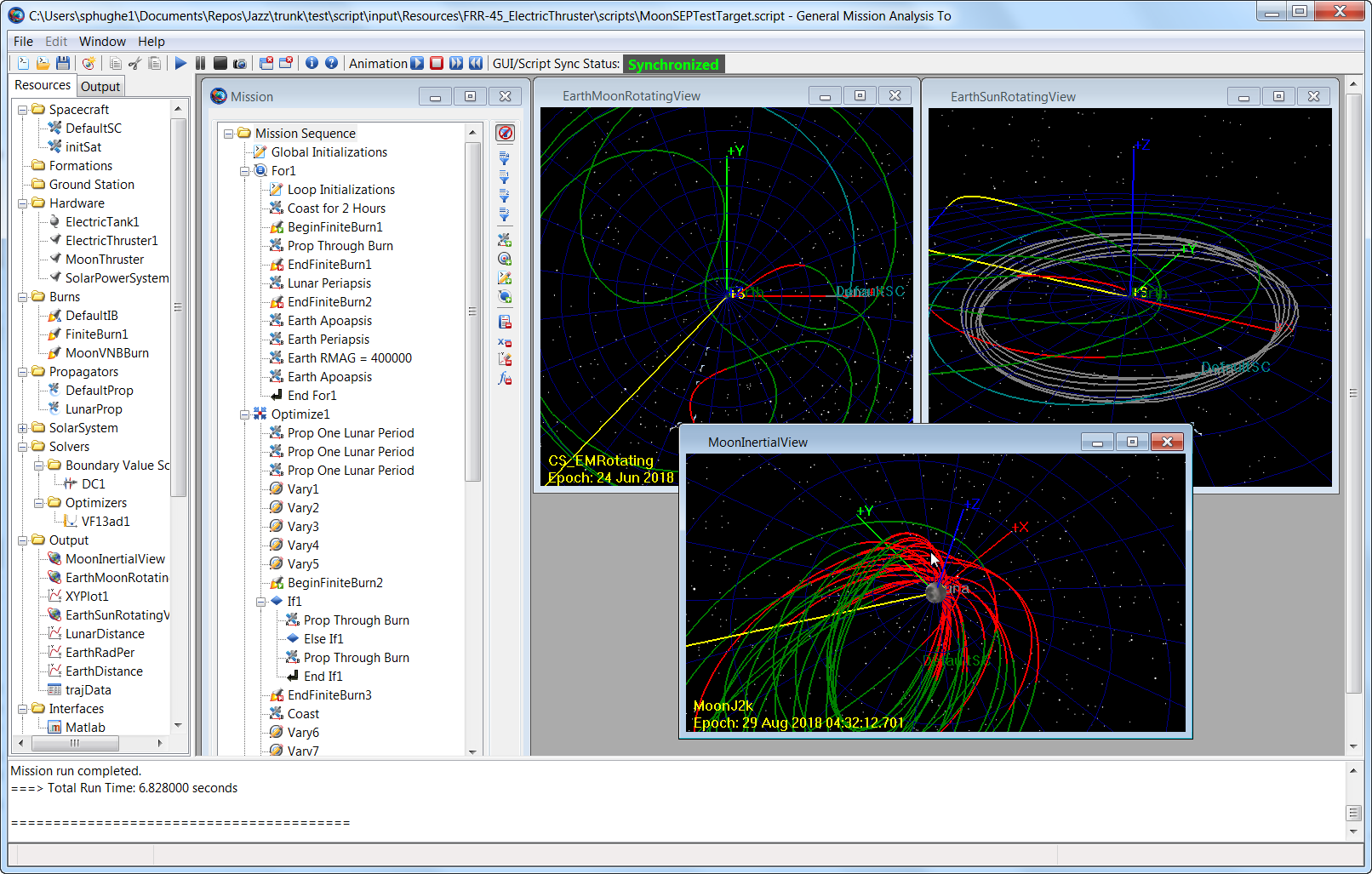The GMAT development team is pleased to announce the release of GMAT version R2020a. The binaries are available here. New features in this release include a new 3D graphics engine based on OpenFrames, the first production-quality C++ release of the Collocation Stand-Alone Library and Toolkit (CSALT), a new optimal control subsystem that supports finite-thrust optimization, a new (beta) API developed to provide users low-level access to GMAT functionality and to support interoperability between NASA's GMAT, Copernicus, and MONTE software applications, a new continuous thrust mission design and navigation feature, and a new (alpha) Extended Kalman Filter Smoother with process noise. For a complete list of new features, compatibility changes, and bug fixes, see the Release Notes
In recent news, we are excited to report that GMAT continues to see significant adoption for operational mission support:
- On May 1, 2018, the Lunar Reconnaissance Orbiter (LRO) project held an Operational Readiness Review (ORR) to evaluate GMAT as a replacement for GTDS as the primary operational orbit determination (OD) tool for LRO. GMAT was approved for this purpose at this ORR and LRO began using GMAT for operational OD in June 2018.
- In April 2018, the Transiting Exoplanet Survey Satellite (TESS) mission launched. TESS used GMAT as its primary tool for mission design and maneuver planning from proposal development through operations. For more information about TESS, including a discussion of how GMAT was used, see the published paper at https://ntrs.nasa.gov/search.jsp?R=20180006156.
- The GMAT team is currently developing an Extended Kalman Filter Smoother (EKFS) orbit determination capability for future release. A publicly available version of GMAT, with EKFS capabilities for all data types supported by GMAT, is planned for the R2021a release.
- The GMAT team is currently integrating CSALT into GSFC's Core Flight System (cFS) to demonstrate the ability to perform optimal control onboard.
Do you want to go to Mars but don't know when to leave or how much to bring? Do you want to land something on the moon? The General Mission Analysis Tool (GMAT) is an open-source space mission analysis tool to answer just those types of questions. GMAT is developed by a team of NASA, private industry, public, and private contributors. GMAT is intended both for real-world engineering design studies and as a tool for education and public engagement in the spirit of the NASA Charter.
This wiki contains many resources for GMAT users and developers. It is intended for collaboration! If you see anything wrong with any of the pages on this wiki, or wish to add GMAT-related information on your own, please feel free to contribute.
GMAT and Space Mission Design
GMAT is designed to model, optimize, and estimate spacecraft trajectories in flight regimes ranging from low Earth orbit to lunar applications, interplanetary trajectories, and other deep space missions. Analysts model space missions in GMAT by first creating resources such as spacecraft, propagators, estimators, and optimizers.
Resources can be configured to meet the needs of specific applications and missions. GMAT contains an extensive set of available Resources that can be broken down into physical model Resources and analysis model Resources. Physical Resources include spacecraft, thruster, tank, ground station, formation, impulsive burn, finite burn, planet, comet, asteroid, moon, barycenter, libration point. Analysis model Resources include differential corrector, propagator, optimizer ,estimator*, 3-D graphic, x-y plot, report file, ephemeris file, user-defined variable, array, and string, coordinate system, custom subroutine, MATLAB function, and data.
Below we illustrate some recent applications using GMAT. A solution is shown that uses a low thrust propulsion system and a cube-sat for a lunar mission.

